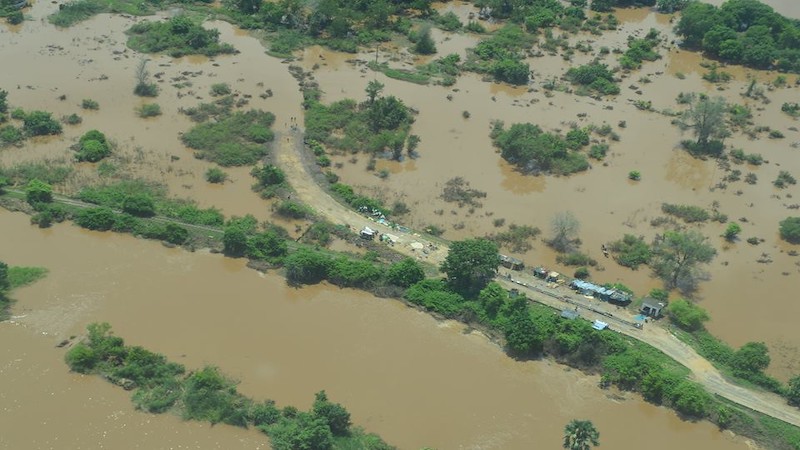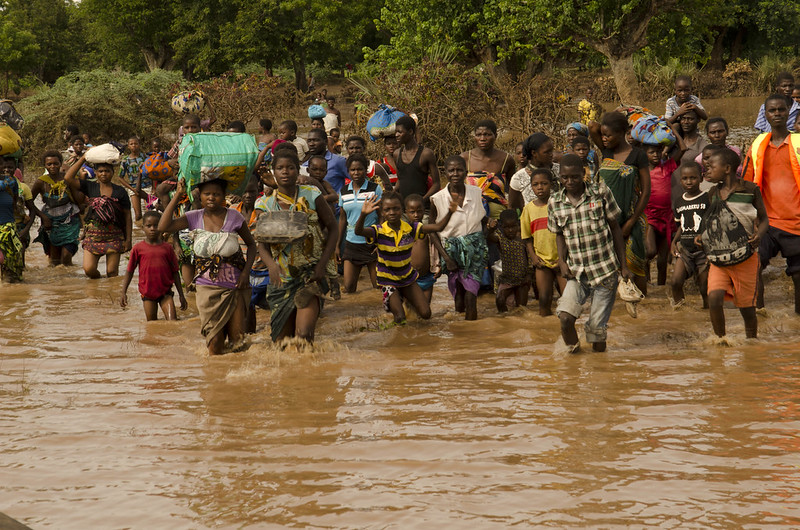The first talks on how to set up a loss and damage fund were held this week. In the meantime, disaster-torn countries like Malawi appeal for urgent support.
As dozens of countries got to work this week to turn the historic loss and damage deal into reality, those at the forefront of the climate crisis had a clear message: time is of the essence.
This is true for southeastern Africa where the devastating passage of Cyclone Freddy laid bare low-income countries’ high vulnerability to extreme climate events.
In the worst-hit Malawi, the storm killed more than 600 people and displaced at least 650,000 more, while also dismantling infrastructures and livelihoods.
A patchwork of disparate tools under the loose umbrella of ‘loss and damage finance’ is now being fast-tracked to help countries like Malawi recover from Cyclone Freddy and prepare for future hazards.
But the nation’s leaders and international campaigners are urging rich nations to quickly deploy more substantial, structural and unconditional funds. If it takes too long for loss and damage money to be available – they warn – communities could be trapped in a state of perpetual vulnerability.
Devastating impact on Malawi
In Malawi extreme weather events, like floods and seasonal droughts, are becoming more frequent and more intense due to climate change.
Government estimates suggest the country loses an average of 1.7% of its GDP every year as a result of climate change-related disasters. It is already one of the poorest countries in the world.
A group of Malawians rushes towards a rescue boat after an extreme climate event. Photo: UNDP/Flickr
Cyclone Freddy was the longest-lasting and most travelled tropical cyclone ever recorded, according to meteorologists. The floods caused by the storm affected half of the country. Dozens of major roads and bridges have been swept away, making vast swathes of the country inaccessible by road.
It was the third extreme weather event to strike Malawi in a 13 months period.
Zoha Shawoo, a researcher at the Stockholm Environment Institute, says if communities cannot recover from the loss and damage caused by one event they will be more and more vulnerable to future ones.
“There is a need for urgency in delivering funds, but also for dedicated, long-term support for recovery and rehabilitation,” Shawoo told Climate Home News.
‘Funds are needed right now’
At Cop27 governments agreed to set up a fund for vulnerable communities hit by climate disasters. Now a UN Transitional Committee is tasked with setting the details of how that will work: who pays in, who benefits and how the money is handed out.
The group is made up of 24 government representatives (most of whom are from the developing world) and met for the first time in Egypt this week.
I’m a COP veteran. Here are 3 suggestions for the new Loss and Damage fund
A few days before the meeting kicked off, Malawian President Lazarus Chakwera said loss and damage payments are needed “right now”.
“Those nations that have made pledges in the past need to put their money where their climate change mouths are,” Chakwera told CNN in an interview.
Long road ahead
Concrete help is not expected to arrive from the UN loss and damage fund anytime soon though. While the inaugural meeting has been described as successful in laying the groundwork, some observers have expressed concern over the pace of the action.
The Transitional Committee has scheduled three more meetings this year before making its initial recommendations ahead of Cop28 in November. Then the fund will need to be filled and made operational.
The SEI’s Shawoo doesn’t expect to see money flowing from the fund for at least the next two years. In the meantime, she says developed countries should do everything they can to fill this gap with other forms of financing.
Revealed: How Shell cashed in on dubious carbon offsets from Chinese rice paddies
Ideally, she says, this should take the form of unconditional, grant-based finance that goes directly to the local level.
Scotland became one of the first nations to stump up cash for loss and damage by giving a small grant to Malawi.
Speeding up support
In the aftermath of Cyclone Freddy, other measures to avert, minimise and address loss and damage are being fast-tracked.
A spokesperson for the World Meteorological Organisation (WMO) told Climate Home the tragedy had “added impetus” to the United Nations-backed initiative to get everyone in the world protected by early warning systems by 2027.
The head of the UN, Antonio Guterres, has now convened an advisory panel on the initiative made up of leaders of UN agencies, multilateral development banks, humanitarian organisations, civil society, insurance and IT companies.
They’ve chosen 30 vulnerable countries to focus their initial efforts on. These include Mozambique and Madagascar, which were hit by Cyclone Freddy along with Malawi.
Vulnerable communities must call the shots on loss and damage fund
Another initiative is known as the Global Shield, a G7 scheme for pre-arranged financial support to be quickly deployed in times of climate disasters.
The Global Shield has initial funding of $210m available, with Germany by far its biggest backer, and works with a group of countries that are highly vulnerable to climate change called the V20.
Its initial focus has been mostly directed at
Read More


